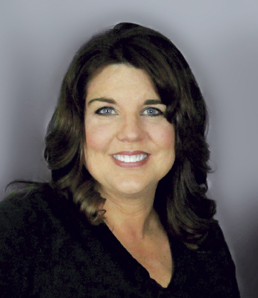Four principles to overcome adversity and press through with your sales career
By Christopher W. Cook
Toward the end of 2016, I polled my networks of young professionals to find out what topics they would like to read about. “Sales” showed up more than once; in fact, it appeared several times. Similar to last month’s feature, this topic reminded me of a continuing education course I attended at the Big “I” Indiana Young Agents Conference last year.
Brandie Hinen, founder and CEO of Powerhouse Learning, shared that she had started in insurance sales at a young age. After a successful producing career and a stint as vice president of marketing for a firm with five locations, Hinen ventured to the educational side, creating Powerhouse Learning, which delivers C-level leadership development, succession planning, productivity enhancements, and new business development training nationwide.
Recalling her beginnings on the sales side, Hinen explains, “The first couple of years are the hardest. Who are we? What makes us special? Why should anyone buy from me?”
Her course, “Sales Psychology: Four Simple Rules” answers these questions:
You are good enough right where you sit
“If you’re coming into the insurance industry as a new person, you’re going to feel bipolar; you’ll feel conflicted most of the time,” explains Hinen. “You have to be task-oriented enough to figure out the insurance side of the business, and then you have to be people-oriented enough to be friendly and outgoing—the kind of person someone would want to work with. It’s tough. Very few of us have that whole brain. Certain people do well at certain things.
“The tendency is to think that you’re not good enough and that you don’t have enough experience or knowledge. You’re good enough right where you sit, as long as you continue to be a learner. Don’t worry about having everything figured out. Instead, decide what kind of person you want to be to the customer. What do you believe in? What is the experience or emotion you want to evoke in the other party?
“Are you a salesperson or a negotiator? Be flexible. Get prepared by practicing your points; rehearse mentally and quality check all of your work.
“Be committed to create. What are you committed to create in your business relationships? Authenticity? Sincerity? Trust? Confidence? Clarity? If you’re committed to create clarity and the client is confused, you know right then that you need to shift your approach,” explains Hinen.
It’s also important to have a personal vision. “Vision helps you stay clear about your purpose and reminds you what you stand for and what you don’t,” Hinen says. “When obstacles arise, go back to your vision. When you have a vision and a passion for your life, other people will see it. Having no clear vision and not knowing what to do when obstacles arise are the main reasons people abandon their ideas.”
You can do better than the “old way”
“By ‘old way’ I’m not talking about old-school values; I’m talking about using new-world efficiencies,” says Hinen. “I had someone tell me that, back in the day, she went door to door to push people until they agreed to meet with her. That technique may not be practical today, or a part of your personality. Use technology to advance your career and generate leads. Be yourself.”
While technology may make communicating with clients easier, there are a few tips to remember in regard to setting up appointments.
Never say that you are “too busy.” In the insurance industry, your job is to bring relationships closer, but if you’re “busy” you push them away. Busier than whom? You want your clientsto feel welcome, understood, and important, but when you say you’re busy, you elevate yourself above someone else.
Hinen uses the initialism PCRA (Promise. Commitment. Request. Agreement.) to explain ways of taking action. Who will do what and to what specificity?
“What’s the difference between a promise and a commitment?” asks Hinen. “When you make someone a promise, you give them your word. A commitment is a promise acted upon. It’s what transforms promise into reality.”
For example, you tell a client that you will meet her at Starbucks at noon. At what time are you considered late? At 12:01 you broke your promise. Letting people know that you’re running late tells them that you’re serious and that you care about them.
“I don’t give or receive a promise without a ‘by when,’” explains Hinen. “I never want to hear a salesperson listen to a prospect who says, ‘Why don’t you get back to me in the next couple of weeks’ and the salesperson hangs up the phone after saying, ‘Okay.’ It automatically puts the salesperson in a position where they have to chase the prospect. When making a request, if I don’t get a yes, no, or maybe, I don’t have an agreement, I only have a request. Making a request without agreement sometimes leads to the math formula: Expectations minus reality equals disappointment.
“We get so busy thinking whether we can get everything done that we may not think about how often we give our word and what it means,” adds Hinen. “If I treat every promise I make as equal, what kind of person could I become? The answer is a person who lives in total integrity, not someone who just gets a better looking date to the prom when tempted. In the old days, you could walk into a town and ask, ‘Who is a man of his word,’ and everybody would know. A simple way to gain trust is by keeping our word.”

“We get so busy thinking whether we can get everything donethat we may not think about how often we give our word and what it means.”
—Brandie Hinen
Founder and CEO
Powerhouse Learning
Think differently—grow exponentially
We all face adversity on a daily basis, but what thinking process do we use to tackle it and how does it make us grow?
“All of us face about 22 adversities a day,” says Hinen. “The number one factor for success is how well we withstand and overcome them. When most of us are faced with it, we want to put our heads down and hunker underneath the covers, but you have to be comfortable in the uncomfortable.”
One of Hinen’s favorite books is Adversity Quotient by Paul Stoltz, who discusses the differences among campers, climbers, and quitters; the climb being the challenge in front of them.
Quitters should be relieved from their positions; they flat-out refuse to challenge the climb. Approximately 10% of workers are quitters. Eighty percent are campers. They were once climbers but rolled out the sleeping bag. They may be quite content with the apparent tradeoff between sacrificing what could be to hang on to the illusion of keeping what is. Climbers make up the remaining 10%, and even great climbers have to stop once in a while to reflect on their goals and what they are trying to accomplish.
When it comes to sales statistics, an Internet meme making the rounds on social media states that 2% of sales are made on the second contact, 5% on the third contact, 10% on the fourth contact, and 80% are made on the fifth through twelfth contact. It also shares that 48% of salespeople never follow up with a prospect, 25% make a second contact, 12% make only three contacts; and only 10% make more than three. Even if the numbers are accurate, there’s no reason to be discouraged by these statistics.
“I call and leave a voicemail, and the prospect deletes it; I send an email, and they delete it; I may stop by their office, only to find that they’ve thrown away my brochure. That’s three contacts,” explains Hinen. “In my brain I make up a story that says you don’t love me and you never will. You’ll never buy from me. Truth is, that’s just my story and likely not reality. When we quit after three attempts, we set the prospect up to buy from our competition.
“There are only so many ways we communicate: phone call, personal visit, sending a card, social media, email. Don’t be discouraged if you feel like a quitter if you stopped after three contacts. Get into a creative process and figure out how you’re going to press through.”
When it comes to meetings with clients, be aware of how you present yourself through your communication. Only 7% of communication comes from actual words; 38% is tone of voice and 55% is body language.
“We are communicating and negotiating all the time,” says Hinen. “If you are in a negotiation, conversation, or selling situation, the buyer wants something from you or else they would not be talking to you.
“Recognize body language. If someone covers their mouth, they want to say something but don’t. If someone’s sitting up straight, they’re paying attention. Seventy percent of how we communicate in a selling situation should be in question form, and of that, 80% should be listening and not talking.”
Learners kick a$$
Political theorist and author Benjamin Barber said, “I don’t divide the world into the weak and the strong, or the successes and the failures; those who make it or those who don’t. I divide the world into learners and non-learners.”
“Less than two percent of people are lifelong learners,” Hinen says. “I find it fascinating as an observation of human psychology. Be a learner.”
Says Hinen, “You have to go out and struggle in order to get better; if you’re uncomfortable, that means you’re learning. Learn to listen, watch and interact with others to check and relate to their responses. Use something special to you that will be appealing to your audience. Use step-by-step marketing plans. Less than 15% of people have a written marketing plan, and less than 10% of those actually see it through to get results. It can feel discouraging, but you can overcome the statistics by creating small steps and being consistent.”
Never stop learning, grow exponentially by thinking differently, be better than the “old way,” and remember that you are good enough right where you sit. Go get 'em.
For more information: Powerhouse Learning | www.powerhouselearning.com

